HubShots Episode 86: WhatsApp Spam, HubSpot sub-workflows, HubSpot Sales Deal pipelines
Welcome to Episode 86 of HubShots! Welcome to HubShots, the podcast for marketing managers who use HubSpot hosted by Ian Jacob from Search & Be Found...
If you're new to HubSpot, we guide you on where to start, how to do it right, and train you to make the most of the platform.
Review your HubSpot portal to uncover issues, spot growth opportunities, and ensure you're maximising its potential.
Unlock business growth with automation and attribution. Implement best practices and execute marketing campaigns.
HubSpot On-Demand
HubSpot Training
HubSpot Websites
HubSpot Campaigns
HubSpot Optimisation
18 min read
XEN Systems Updated on July 30, 2019
Welcome to HubShots - APAC's number 1 HubSpot focussed podcast - where we discuss HubSpot tips & tricks, new features, and strategies for growing your marketing results.
We hope you enjoy the podcast as much as HubSpot's CEO, Brian Halligan does.
This episode we look at replacing yourself with tools, plus avoiding HubSpot workflow mistakes.
Listen to the episode here: https://soundcloud.com/hubshots/162-avoiding-hubspot-workflow-mistakes-and-replacing-yourself-with-tools/
HubShots, the podcast for marketing managers and sales professionals who use HubSpot, hosted by Ian Jacob from Search & Be Found and Craig Bailey from XEN Systems.
Subscribe to our YouTube channel here: https://www.youtube.com/channel/UCD3Uo4X-IxPJLE8ygPDQhNQ
Subscribe to our Spotify channel here: https://open.spotify.com/show/7oee8w41riN5aRNrLKT2ar
Join the Facebook group here: https://www.facebook.com/groups/hubshots/
Follow us on Twitter here: https://twitter.com/hubshots
Follow us on Instagram here: https://www.instagram.com/hubshotspodcast/
Follow us on LinkedIn here: https://www.linkedin.com/company/hubshots/
Recorded: Tuesday 14 June 2019 | Published: Friday 21 June 2019
Analysing data to highlight trends eg HubSpot Trends report:
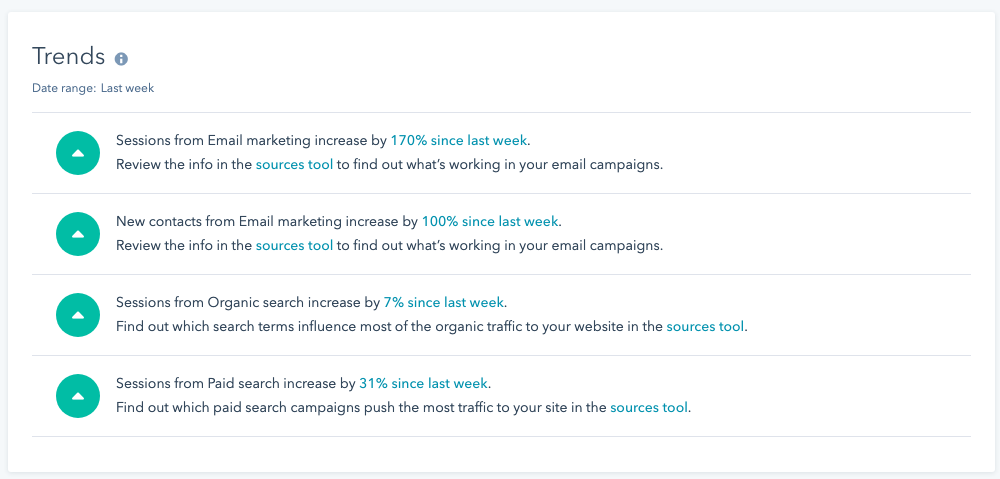
There’s a bunch of tools in this space eg see also MAXG: https://www.maxg.ai/ from the team at Square2Marketing which aims to highlight issues to investigate.
Have a look at Artificial Intelligence (AI) is at work in HubSpot > https://www.hubspot.com/artificial-intelligence
Another is Atomic Reach. It is a content intelligence platform for marketers > https://www.atomicreach.com/
https://blog.hubspot.com/customers/5-biggest-workflow-mistakes-how-to-avoid-them
An interesting note: delays might be useful right at the start of a workflow in case a Contact’s properties are a few seconds delayed in getting updated.
“Sometimes data isn’t instantly populated on an object record when a visitor converts and is created as a contact in your account for the first time. It can take up to a few seconds for the incoming data to populate in the associated properties. If a workflow is set up to assign a new contact to a sales rep based on their form responses, place a delay in as the very first action. If not, the contact may enroll in the workflow seconds before its contact properties have finished updating, and the wrong owner may be assigned as a result. Although this doesn't always happen, it's something a one-minute delay can easily take care of.”
And as usual the CTA is to do a HubSpot Academy lesson:
https://academy.hubspot.com/lessons/understanding-workflows-in-hubspot
Importance of looking at Time in Deal Stage.
This report shows the average amount of time deals spend in each stage of your funnel. Use this report to see how your deals are moving through the funnel and to see where things might be getting stuck. You can also see what deal stages are being missed all together too!
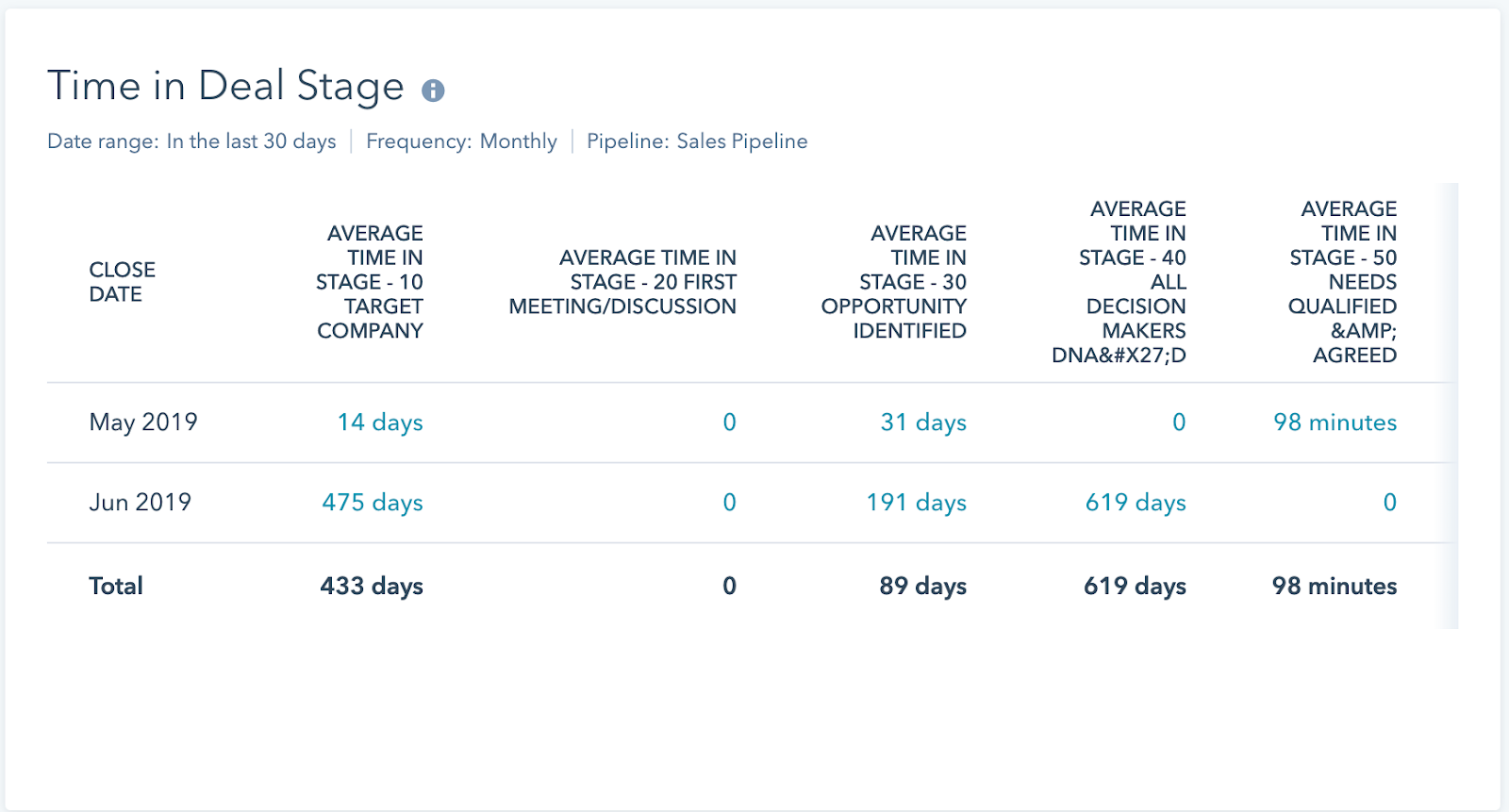
Getting Slack notifications for HubSpot Conversations via a team email box doesn’t work as you’d expect
Slack notifications to a channel only work for Chat Conversations.
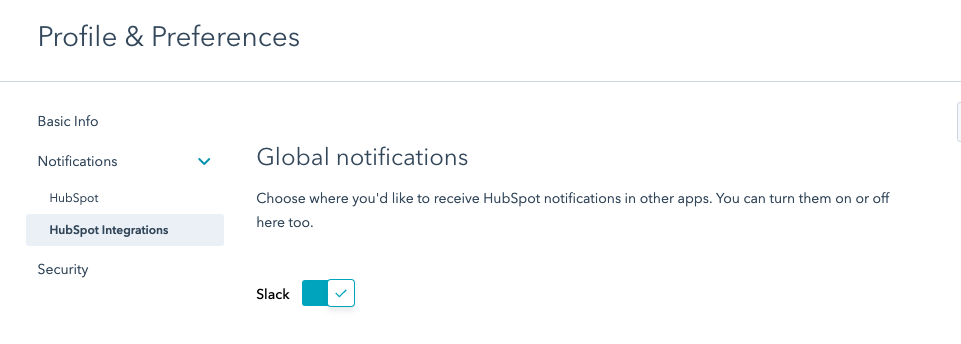
For Inbox Email Conversations you need to set up personal notifications, that end up in your Slack HubSpot app ‘channel’
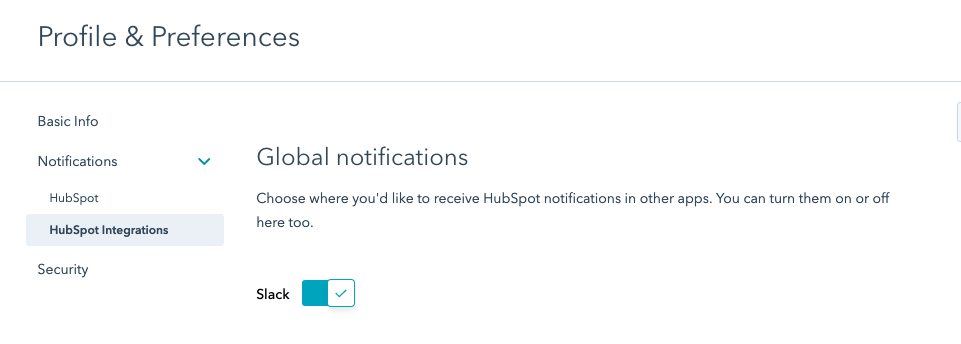
Go to the Assign area:
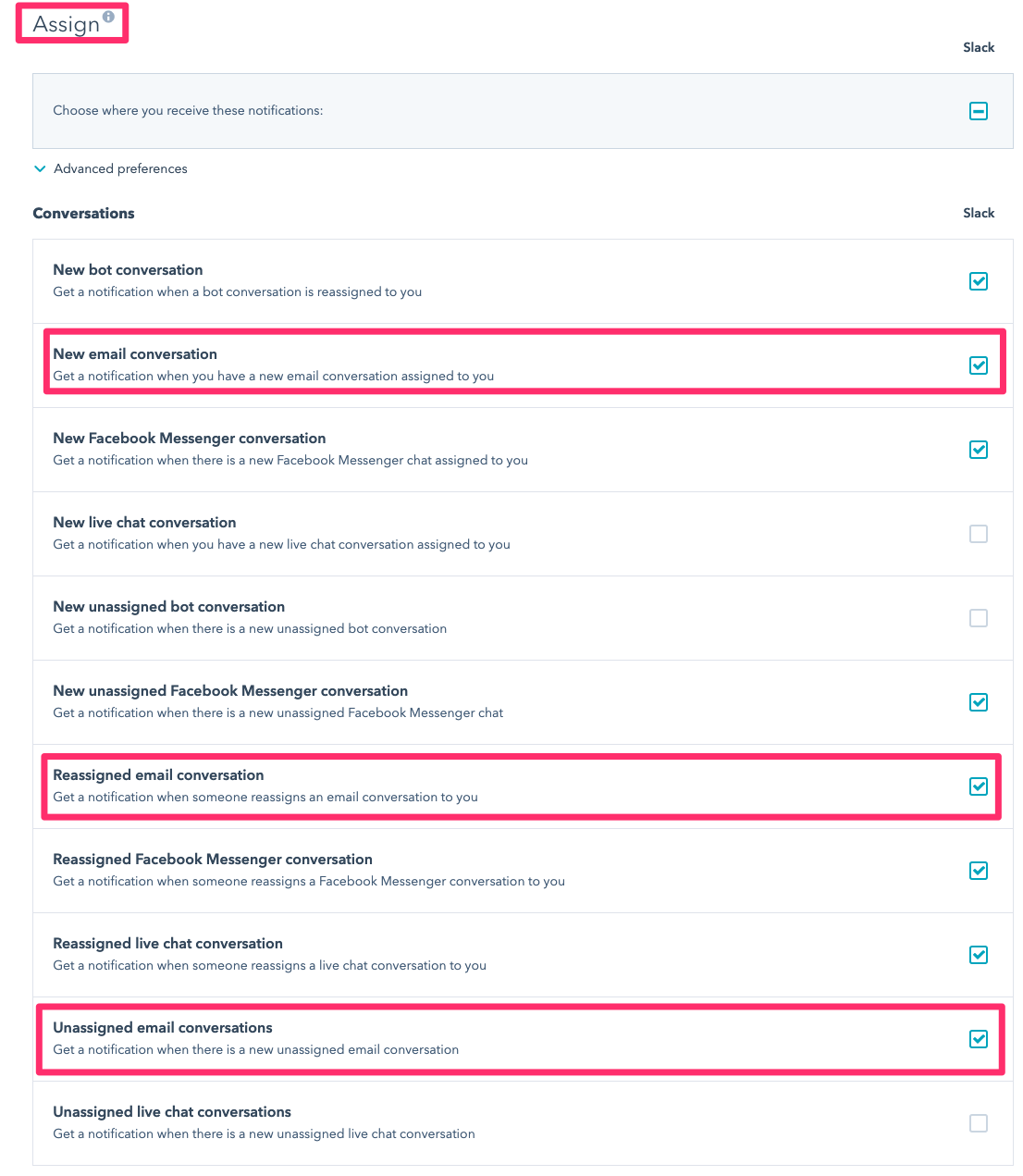
Adding FAQ schema to a web page via Google Tag Manager:
https://www.semrush.com/blog/how-to-add-faq-schema-google-tag-manager/
Two key takeaways:
Do you consider tools a cost or an investment?
Compare tool costs with staffing costs - what can you replace with a tool?
Is it more accurate, more insightful, less error-prone, faster, easily repeatable, etc
Now consider your own role. Is what you are doing today, replaceable with a tool? If so, then what is the value you are adding? What will you be doing tomorrow?
Examples of tools we’re using: HubSpot, ahrefs, SEMrush, SanityCheck, Zapier, Databox, AccuRanker…
Which tools are you using? Let us know in the comments or tweet us @hubshots: https://twitter.com/hubshots
Inbound Happy Hour
New podcast from our friend Chris Higgins:
https://www.inboundhappyhour.com/
700 Facebook Ad examples:
http://kristihines.com/facebook-for-businesses-facebook-ads/
600 Instagram ad examples:
http://kristihines.com/instagram-for-business-instagram-ads/
“You don’t have to be big to make a BIG difference in the world.” - Norbert
https://www.instagram.com/p/BygL6-pgmJr/
https://rankmath.com/blog/google-indexing-api/
https://www.apollo.io/explorer/
Please leave us a simple star rating as this helps us improve and reach more marketers.
[Ian] Hi everyone, welcome to HubShots Episode 162. We talk about avoiding HubSpot workflow mistakes, and replacing yourself with tools. You’re listening to Asia Pacific’s number one HubSpot focused podcast, where we discuss HubShot tips, tricks and features for growing yourselves and marketing results. My name is Ian Jacob from Search & Be Found and with me is Craig Bailey from XEN Systems. How are you, Craig?
[Craig] Yeah, really good and feeling replaceable.
[Ian] That’s right, we are the replaceables.
[Craig] That’s right, in our strive for efficiency it’s all about getting tools and processes in place, so we can provide more value and we’re gonna chat a little bit about that first in the Inbound through the week, but also later in our Inside of the week.
[Ian] That’s right, so Craig, you know, Inbound through the week. this is something I stumbled upon today, is a new report in HubSpot and it’s analyzing data to highlight trends within HubSpot, so what it’s doing is using artificial intelligence from what I can see and it’s showing you things like sessions from email increased by 170% over the last week, new contacts from email increased by 100%. I mean, the screenshot we’ve got and the one I had in my portal had it everything going up, I wonder what happens when things start to go down?
[Craig] I was wondering that as well, yeah, trends, we only show you the good trends so it seems like everything’s working. Yeah, but that’s right it’s really about analyzing and it’s probably on the size of the data set that it can analyze as well and also frequency, all those kind of things, especially when its talking about email marketing and that kind of stuff. But, yeah, it’s really interesting to see these becoming part of the actual report stack.
[Ian] Yes.
[Craig] And by the way just reminding people when we say a report in HubSpot we’re talking about one of those little widgets that appears on your dashboard. Oh, by the way you can drill into them into a bunch of the reports,
[Ian] Yes, you can.
[Craig] not this particular one, but bunch of reports especially trend lines and things you can drill into them.
[Ian] That’s right, and I think what’s highlighted that there are multiple things, you know, I’ve highlighted there is actually a page on HubSpot it talks about artificial intelligence at work in HubSpot and over the course of the years we know HubSpot have actually purchased products or businesses that specialize in artificial intelligence and then they have now integrated that into HubSpot. And it’s starting to surface a lot of that through the, for example, the SEO tool within HubSpot. It’s one of them, we’re gonna actually use it.
[Craig] Yeah, that’s right and look it’s it’s kind of pretty commonplace now. People are building the tools right left and center for all this kind of insight and analysis. And as we have, well, it goes back to the data sets doesn’t it?
[Ian] Exactly.
[Craig] ‘Cause we have more data to analyze, we can actually make quite useful and insightful predictive analysis.
[Ian] That’s right, and I think there’s another one that I’ve actually tried out and it’s a content intelligence platform, which actually hooks into HubSpot called Atomic Reach.
[Craig] I’ve heard of these guys
[Ian] Yes.
[Craig] actually, and I noticed when you sent it to me earlier, I was like, oh, I’ve got to log in.
[Craig] Correct.
[Craig] Oh, it’s expired I must have tried a long time ago ’cause I love trying out tools. You know, folks if there’s any tools you’d like us to try just send us a login. If you’re a vendor and you’ve got a tool that you’d like us to try out and maybe mention on the show send us a login and we’ll take a look, always keen to check these things out.
[Ian] That’s right, so we encourage you to actually have a look at it because it can make a difference.
[Ian] All right, Craig, on to our HubSpot marketing feature of the week and this is about avoiding workflow mistakes.
[Craig] This is a HubSpot blog and you know how we’ve done a few episodes. This almost felt like, I was wondering if this was, you know, how we had one on all the big mistakes we see?
[Ian] Yes.
[Craig] And then we had another one on workflows? This was kind of great combination of those two ideas, I’m not saying they took the idea from us at all but I just kind of flagged in my mind, oh yeah, this is a really good post. Why didn’t we do an episode called, Avoiding Workload Mistakes? Anyway, it’s a really good post. They go through a few things, five key ones actually. The one that I wanted to highlight is a bit of a gotcha. I hadn’t really thought of this but talking about using delays in workflows especially at the start of a workflow, which I actually kind of do by default anyway.
[Ian] Yes you do, yeah.
[Craig] But it turns out there’s a good reason for doing that and that’s because often a contact, so they fill out a form, submit, it can be just a couple of seconds before some of those fields are updated on a contact. And so the the author of the post was saying, let’s say you had a workflow triggered by a form submit.
[Ian] Yep.
[Craig] That then works on the contact. There might be fields on that contact that aren’t updated until after they’ve already been into the workflow.
[Ian] Okay.
[Craig] So the point is if you’ve got entry criteria that are dependent on a few things, not only the form but also contact properties, they may or may not actually fire correctly. So, it was one of those things where put a delay at the study workflow, if someone gets into the workflow and maybe they shouldn’t have. Well, you’ve probably got a goal or some exit criteria to get them out. But just this idea what if you had branching that relied on some of those criteria maybe something that they had entered in the form. Unless you had a delay, it might not have picked those up correctly. So they call that a workflow mistake to avoid. I call that a deficiency in HubSpot ’cause there’s a delay before the HubSpot should take care of that for you surely.
[Ian] Yes.
[Craig] However, the point remains just be smart about that and it’s pretty simple to put a minutes delay at the start of every workflow just for good measure.
[Ian] And what’s a good time for a delay, Craig?
[Craig] I’d go the minimum so like a minute.
[Ian] Minute, yes.
[Craig] Like I don’t think you can choose seconds, but yeah, all you need is 10, 20 seconds.
[Craig] Now, we’ve run into this before, right? Because when you have multiple forms and you go form submit on one page, goes to the next page, and the deck doesn’t pre-populate with what they’ve put in the previous form. It’s because there’s that slight delay in the record getting updated and then pulled back. So we’re aware of it, I just hadn’t thought of it in terms of workflow so good tip there thanks.
[Ian] Yeah. So I think if you’re in marketing, which some people might not realize, if someone inputs data in a form, it actually has to go into HubSpot and then if you’re trying to collect it on the second page to display it again or to pre-fill it, it actually needs to come back. So it’s doing this two-way journey, it’s not just passing it from one page to the next just so be aware of that. All right, Craig, HubSpot sales feature of the week. This is one we have been talking about as we look more to deal stages, and this is a report that’s available where it talks about the time in deal stage. I know for a fact people look at this and they try to understand where the parts of this sales flow is stalling or are things, particular things, happening at stages and it’s taking too long? And so we’ve been looking at this across multiple clients to understand which stage is actually taking too long and you’ll probably see from a screenshot in my example which stages are being totally missed altogether and nothing’s actually going in there or they’re basically skipping that stage in the sales process. So that might be an indication as to understanding why it’s needed or why it’s not needed. So what’s interesting is you’ll see that they calculate an average time and in this particular report I’ve showed you it’s got two-months worth of data there. So it’s got the current month and the month before. That gives you averages.
[Craig] Yeah, what’s the data set for this particular one? Seems quite different. Yeah, all the deals be interesting to know how many are going into that.
[Ian] It’s actually the deals closing in the next 30 days.
[Craig] Yeah, right.
[Ian] So you’ll see that and I’ve got obviously a date range of 30 days. So you can play around with this and massage it however you see fit.
[Craig] Yeah, but that’s exactly right not in that second stage in the sales pipeline. No one in there they’re just skipping over so good indication that you might not need it.
[Ian] That’s right or you might end up finding that there are things that sit in a deal stage that never end up moving because maybe a deal actually is stalled for some reason and no one’s actually moved it on.
[Craig] Ah, well that’s interesting. So let’s say something was caught in a deal stage. Instead of putting zero surely it would just have the total time frame so far.
[Ian] Correct.
[Craig] I wonder how they calculate? That’s interesting is it based on that actually moving out of a stage or is it based on it moving into a stage?
[Ian] Correct, exactly. So there you go but I think it’s overall a really useful report if you’re not using it to actually find out where in your sales process things are getting stuck and encourage you just to at minimum add it to your dashboard.
[Craig] Ah, absolutely right. This wasn’t in the earlier versions of HubSpot and I remember clients saying we need time in deal stage time in deals how you are now doing all this ridiculous exporting out to spreadsheets to calculate it. So it’s great that’s in there. Most sales managers live on this report, it’s crucial to them. Or a good sales manager will be looking at this closely. Yeah, excellent.
[Ian] All right, Craig, on to our HubSpot gotcha of the week, and this is to do with Slack notifications for inbox email conversations.
[Craig] All right.
[Ian] It’s a bit of tongue twister right there.
[Craig] Yeah, that’s right. Conversations, which I don’t know if I like the name or not.
[Ian] Yeah, so now this can include email and Tratchat.
[Craig] Yeah.
[Craig] And possibly Facebook chat as well.
[Ian] Correct, which will come.
[Craig] Yeah, I haven’t actually implemented that. This gotcha is, so we’re using conversations for support. So we’ve got a team in box set up going into conversations in HubSpot and that’s the support basically, the support desk for our brands. There’s an option to get Slack notifications when you look at the inbox settings. I said, oh great, because whenever a new conversation comes in to the team inbox we just want to note in our Slack channel, bang now there’s someone, jump on it quickly. Anyway, turns out the gotcha is that only works for chat conversations not email conversations. So it’s like, oh okay, and it is there, and I’ve actually highlighted it in the screenshot. So it does actually say that but I totally missed it. And, of course, I got onto HubSpot support, and I’ll tell you what HubSpot support they never, they’re less than five minutes now. I just get the phone call every time. They call me, anyway, they sorted this out for me. They go, oh yeah, no, actually that’s not the case and you can’t actually get notifications in the Slack channel for email conversations. All right, so that’s the gotcha, but what you can do is get personal notifications in your HubSpot notifications settings for your personal profile
[Ian] Yes.
[Craig] to go into the HubSpot app channel.
[Ian] That’s right.
[Craig] So not an actual hash channel in Slack but into your own HubSpot channel. So we’ve just got some screenshots showing how you set that up
[Ian] That’s right.
[Craig] and it’s for basically get notifications for an email conversation that’s unassigned or is assigned to you and there’s a whole bunch of them as well.
[Ian] That’s correct and this is in your individual profile preferences?
[Craig] Yes.
[Ian] Where you need to actually have the global notification for Slack turned on.
[Craig] Yes.
[Ian] And then go check what are the different notifications you can have and enable them and we have highlighted them in the show notes. If you ever get stuck just head over to this episode.
[Craig] Yeah, and you’ve basically got to get all your team to do it individually on their own profiles. You can’t kind of force it globally.
[Ian] All right, Craig, onto the marketing tip of the week. Any FAQ schema to a webpage by a Google Tag Manager.
[Craig] Yes, I wanted to throw in one for the geeks here. So this is two things schema markup on your web pages and two using Google Tag Manager to do it. I’m not going to go into it but there’s a link here to their post but here’s the two takeaways. First, schema markup is really important for Google SEO.
[Ian] Yeah.
[Craig] An FAQ markup is probably one of the easiest or that many people would have on their website. So if you’ve got an FAQ page on your site, you can actually create FAQ schema markup and that kind of sits behind the page. Google looks at it when it’s crawling and goes, oh right, I’ll pull this out as some can often pop up in, you know, questions people ask. The second thing as well, we kind of have to do that in our web content management system. How would we do it? So, for example, how would you add it to a page in a HubSpot page?
[Craig] It’s actually pretty hard.
[Ian] Yeah.
[Craig] So here you can use Google Tag Manager to do it so the second takeaway is if you’re not yet using Google Tag Manager you should.
[Craig] It’s time to get onboard.
[Craig] You’ve got to be using Google Tag Manager not only for inserting Google Analytics and other scripts, but for doing things like this it’s gonna become more and more the case.
[Ian] All right, on to our insight of the week, Craig, and we’re going to talk about the value of tools. And this is driven really by a conversation that we had in Inbound thought of the week, which was about artificial intelligence and what is uncovering through data by the use of platforms that we’re using. So do you consider tools to be a cost or an investment in your business?
[Craig] That’s right that’s the question to ask, right, because if you ask most business owners who are paying for it we want to get this tool, x, y, z and told to do something they’re like, “Oh, how much does it cost?” And really, what you should be saying, oh, how much does it save? So, I mean, you know my agency and I know your agency. We use tools a lot. I mean, HubSpot’s a tool, right?
[Ian] Correct.
[Craig] And it’s an expensive tool, and yet, how much does it save us? Incredible.
[Craig] So, what the insight we’re trying to get across this week is really about thinking of it more as a cost saving, and that’s what we’re trying to what’s the value of a tool? And, in fact, going further, often the saving is in versus staffing. So by a tool or hire staff? And think about, well, how many staff do you need to do certain tasks that they’re doing now? And can you replace that with a tool? And so, we use a ton of tools.
[Ian] Yes.
[Craig] And I know you do as well, and we’re always looking for more tools to use ’cause it makes us more efficient. But it’s not only efficiency, it’s also repeatability, it’s also about accuracy, and therefore, the opposite of that, which is avoiding errors it’s all these things. So the question is how can you think about using tools instead of using staff? That’s the first thing. Here’s the flip side. What are you doing yourself, dear listener, that can be replaced with a tool? What are you doing today that can be replaced with a tool? Because if it could be replaced with a tool, why are you still doing it? And, in fact, you need to be thinking about what are you going to be doing tomorrow? So it’s not only oh, yeah, great for you replace the team with tools, it’s like someone’s gonna replace you with a tool. So how are you actually adding value?
[Ian] Correct, and, you know, a lot of the tools that are really good actually show you, for example, time you saved from using their tool to achieve a particular task or outcome. And there’s a particular tool that we both use that does that in the paid advertising space, so I think that’s fantastic. And if you think about all the tools that you use and calculate what that saving is on the outcome you’re getting, and the speed you’re getting it at, I think that will more than pay for it. So we’d love you to actually tweet us and tell us what tools you’re using in your day-to-day life, could be in your business but, I mean, there are tools that we use in our day-to-day life. A really simple one I’ll share with you is on the iPhone, right? I was using it the other day, I’ve got an iPhone 10. The way I was swiping across to get to different apps, some of my friends saw me and they go, “Hang on, can you do that?” Instead they were like closing the app they were in then going back to the home screen and then searching for the app that they wanted to open and then opening the app, move your finger at the bottom of the screen, you can actually slide between all the open apps on your phone.
[Craig] I did not know that. Can I do it on my iPhone SE?
[Ian] There is a similar thing on an iPhone SE.
[Craig] Oh, okay cool.
[Ian] So that’s one another one
[Craig] But hang on that’s not you’re not exactly replacing staff members with that. That’s a hack, I don’t know if that’s a tool.
[Ian] That is a hack. And, you know, this is what I’m saying is that there are lots of different, I say, apps on your iPhone that can help you save time or remember things better or get things done faster where you might have been taking longer time to do.
[Craig] No, that’s exactly right so it’s all around efficiency. Now, look, some of the tools, so what tools do you use in your agency or even with your clients in terms of marketing that actually are saving, you mentioned one before, which was Optimizer I think you were referring to?
[Ian] Yes, correct. Atomic Reach is another one that I’ve been testing out. We use Ahrefs.
[Craig] Yep.
[Ian] That’s right.
[Craig] Or is it SEMrush let’s have a debate about that.
[Craig] Yeah, things like that. Sanity Check is one we use it analyzes Google Search Console and just pulls out striking distance keywords. We used to spend hours doing that kind of analysis for clients. Now it just does it in a second. It’s always different tools AccuRanker data box, yeah, reporting just getting dashboards ready. I mean, you might think our reporting’s not really that groundbreaking till well when it’s beautiful to use automated updates automatically and can be just shared with the client. That’s saving tons of hours
[Ian] That’s right.
[Craig] and that’s giving them real-time insight so, yeah, bunch of tools.
[Ian] Yeah, and Zapier.
[Craig] Zap it, ah!
[Craig] And we both use it for different things. So you use it to push data from one system to into HubSpot. Zapier is our and Tara one of our team, she just loves Zapier now. The things she is doing with Zapier.
[Ian] Yes.
[Craig] It’s incredible.
[Ian] You know, if anything you take out of this whole conversation. If you just go and look at Zapier and figure out what are the things you can automate or speed up? And you’ll see like there’s a whole, if you put in the tools that you’re using you’ll get a whole bunch of recipes. I’d encourage you just to go and do that.
[Craig] Well, and let’s just finish with pulling this back to HubSpot,
[Ian] Yes.
[Craig] And, in fact, workflows. As we’ve said in many episodes, just setting up well-thought-out workflows alone can save you hours and hours. The price of admission alone for HubSpot.
[Ian] Absolutely. All right, Craig, on to our podcast of the week. Inbound Happy Hour.
[Craig] Shout out to Chris Higgins.
[Ian] That’s right, Inbound Happy Hour dot com. Episode 1 is live.
[Craig] There you go, Inbound Happy Hour, good name.
[Ian] That’s right. All right, on to our resource of the week, Craig.
[Craig] You’ve got two blog posts from Kristi Hines, wonderful writer been following her for years. She’s got two monster posts they’re both about example ads and she’s basically taken a whole bunch of screenshots of Facebook ads and LinkedIn ads across various industries and things like that. And what’s great is you see the engagement each of these ads have. So if you’re after a bit of inspiration on ads that are getting responses on those platforms have a look at these, and yeah, let us know if you actually find something that works for you.
[Ian] If anything go through them because you might actually gain some inspiration of what is working and what’s not, what you have not tried before.
[Craig] The things that I noticed is the imagery that is often used depending on industry, like some industries they just use nice images and the messaging is in the text underneath. And then other industries they use, you know, image that really has a lot of text in the image. And look it’s always just a measure, but I actually find that interesting. You know one of our clients where we both spending a lot of time creating these elaborate banners with their logo and branding and all of that. We did a few tests around just like using stock images, I’m almost embarrassed to say, and they got much better response. People just like these inspirational or aspirational images
[Ian] Yeah.
[Craig] pushing through to download a brochure and stuff like that so it’s just around test and measure.
[Ian] Yes.
[Craig] That’s how it works.
[Ian] And that’s what you will probably see across platforms now especially Google Ads giving the machine images, headlines, descriptions to actually test combinations and see what works and then use that in your collateral and so on. Well, Craig, on to our quote of the week, “You don’t have to be big to make a big “difference in the world,” and that’s from Norbert.
[Craig] Norbert the dog who we love you Norbs on Instagram. He’s an Instagram celebrity.
[Ian] He is.
[Craig] It’s so cute my goodness, But the wisdom.
[Ian] That’s right. So we’d encourage you to go following Norbert the dog and actually see what’s going on. As always, there are a few bonus links of the week. We’d love you to leave us a star rating on Apple Podcasts as this really helps us. You don’t have to write anything just click how many stars you like us and that will help us greatly. And we’d love you to share the podcast with anybody else in your team that would benefit from listening to this and learning about HubSpot. Well, Craig, until next time.
[Craig] Catch you later, Ian.
[Ian] Thank you for listening to this episode of HubShots. For show notes, resources, HubSpot news, including practical strategies you can implement, visit us at HubShots.com.
Welcome to Episode 86 of HubShots! Welcome to HubShots, the podcast for marketing managers who use HubSpot hosted by Ian Jacob from Search & Be Found...
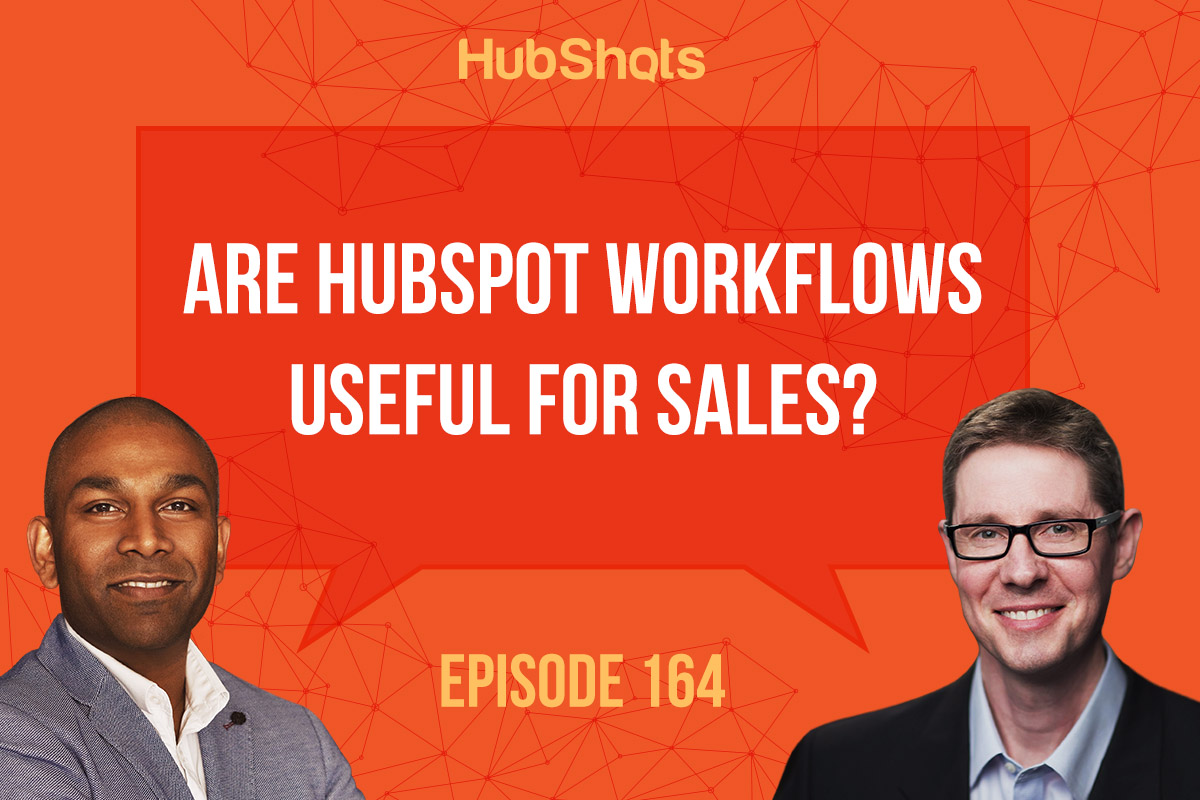
Welcome to Episode 164 of HubShots! Welcome to HubShots - APAC's number 1 HubSpot focussed podcast - where we discuss HubSpot tips & tricks, new...
Welcome to Episode 135 of HubShots! Welcome to HubShots, APAC's number 1 HubSpot focussed podcast, where we discuss HubSpot tips and tricks, new...